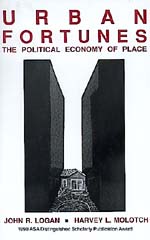 In preparing to talk about representations of reality, and thinking about the Dogma 95 movement in film, I came across this amazing flash animation of images and stories of life living in Jakarta, Kibera, Caracas, and Dharavi, called ‘The Places We Live.’ It’s unbelievably riveting, and I cannot wait to teach Urban again, although it’s going to be great for Media, Technology, and Sociology. (Also, check out this amazing stop-action film of a plane flying over glowing cities at night.)
In preparing to talk about representations of reality, and thinking about the Dogma 95 movement in film, I came across this amazing flash animation of images and stories of life living in Jakarta, Kibera, Caracas, and Dharavi, called ‘The Places We Live.’ It’s unbelievably riveting, and I cannot wait to teach Urban again, although it’s going to be great for Media, Technology, and Sociology. (Also, check out this amazing stop-action film of a plane flying over glowing cities at night.)
first day follies
First days are difficult. Smith College has a pretty lengthy trial period, and students like to ‘shop.’ I can understand the benefits of that, but it also makes for wasted time. Do you just pass out the syllabus and reconviene on the next day? Do you teach full on? Because of this dilemma, I’ve been opting to start class off with some sort of framing story or activity, as a way to get students thinking about the course, thinking about society differently. I have used horoscopes and Mark Twain to talk about chance and opinion, I have used the story of Finn twins to talk about structure and agency, and of Damon Mootoo being lost in Queens to introduce the mash-up grid system of Queens. These have had varied degrees of success.
This semester I’m thinking of a few new things. I’m thinking that I’ll break students into groups of two to make a select who will win the Academy Award for Best Actress, a group of three to pick Best Actor, five to pick Best Director, and then ten for Best Film in order to explain Simmel’s dyad and triad piece (and then talk about roles, power, membership, mediation, participation, representation, etc.). I’m thinking about doing some Twittering for the Media and Technology class, and playing an FDR Fireside Chat and Obama’s YouTube weekly address. Goffman once wrote about a person making a ‘call’ with a toy phone that he found in a trashcan on the street (1981: 86, n. 6), engaging in a fake conversation playing off the (at the time) absurd idea of conducting work on the street. Now, technology allows for the opposite to occur.
For my culture class I was thinking about using fake culture, ‘Stupid Undergrounds’ (Mann 1995), Dog Island, Mos Def’s song Hip Hop, and von Trier’s Dogville to talk about the hyperreflexive turn of culture. I might use an early clip from the Crawford/Gable film The Possessed, wherein a common farm girl comes face-to-face with how the other half lives, by looking episodically into the windows of a slow-moving train. At the caboose, a man offers her a drink and asks: “Have a drink? Aw, don’t go away… Looking in? Wrong way. Get in and look out.” (Slavoj Zizek’s brilliant The Pervert’s Guide to Cinema uses it.)
[youtube=http://www.youtube.com/watch?v=Ke8OIawaAE4]
the the impotence of proofreading
[youtube=http://www.youtube.com/watch?v=OonDPGwAyfQ]
The only question is whether or not I’m going to show this in class.
urban growth
I saw this when it first became news, but you have to applaud Edith Macefield, who turned down $1,000,000 for her home. The picture on the left is her home, the picture on the right is the cover of Logan and Molotch’s Urban Fortunes.
blogender
A website, Genderanalyzer, attempts to guess the gender of a blog based on the writing. Its data is trained by UClassify. I figured that it would be interesting to look at a dozen sociology bloggers, half male, half female. The results: Ts’i mahnu uterna (Correct), Kieran Healy (Correct), Kristina B (Wrong), What is the What? (Wrong), Eszter Hargittai (Wrong), Shakha‘s posts on Scatterplot (Wrong), Jeremy‘s posts on Scatterplot (Correct), Tina‘s posts on Scatterplot (Wrong), GradMommy (Wrong), Rachel’s Tavern (Wrong), Chris Uggen (Correct), and Peter Levin (Correct). Now, there appears to be a great deal wrong with this little program, since when I took it, its reported success rate was barely over 50%. But I also thought about what this says about reifying gender… and scholaristic writing in academia. Based on just these few trials within this social field, we see that it was incorrect 100% of the time with the female bloggers, and 16% incorrect for the male bloggers.


